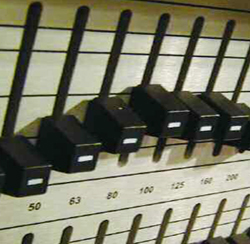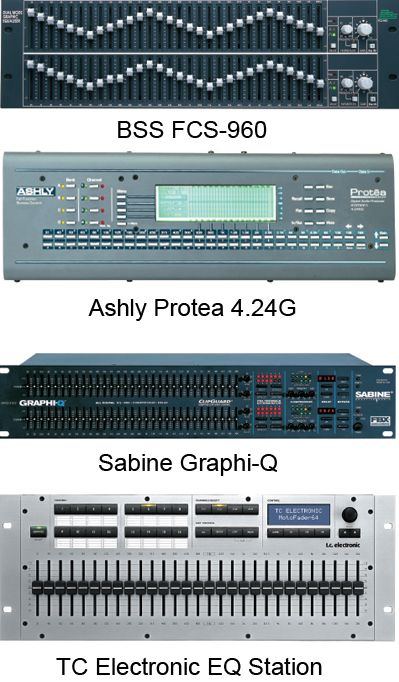
A decade ago, the Protea from Ashly introduced affordable remotely controlled programmable graphic EQ with the 4-channel 4.24G digital EQ.
Its handheld LCD 4.24RD remote controller can be used over a pair of XLRs up to 1,000 feet long.
The 48 kHz sampling rate helped monitor engineers grow accustomed to 1.46 ms latency in monitor mixing. It provides cut and boost of up to 15 dB with a Q of 3.2 (0.45 octave).
Shortly thereafter Sabine introduced the Graphi-Q, a digital equalizer with an analog front-panel interface.
In addition to a compressor/limiter, digital delay and high- and low-pass filters, it also incorporates a dozen parametric filters per channel that can also be used as Sabine’s FBX Feedback Exterminator filters.
It can automatically “ring out” a monitor mix in Turbo mode, placing narrow FBX notch filters at frequencies where feedback occurs.
Another notable feature is the ability to define the bandwidth of its graphic filters from 0.5 to 1.0 octave.
A few years ago we got hooked on the EQ Station from TC Electronic. It’s a 2U DSP frame with eight channels of graphic EQ, each with an additional 12-band parametric EQ, as well as 3-band dynamic EQ, delay and limiter.
It offers four popular graphic EQ types, including BSS 960, KT DN27 and their own borrowed from the TC 1128. Like its predecessor’s companion 6032 remote motorized fader “head,” the EQ Station also has a moving fader remote, the Motofader 64 with 29 motorized 60 mm faders, which vaguely resemble a DN27.
Onboard EQ
Nearly all digital consoles have on-board graphic equalizers, and most can use their moving faders to represent the settings of the faders of their graphic EQs and adjust them.
One favorite is the LS9-32 from Yamaha. It is able to use all of its faders to represent a 31-band graphic EQ in its entirety; the only digital console that we’re aware is able to do so.
This makes it easy to once again visualize the entire equalizer and quickly make decisions, similar to the power of seeing auxiliary send mixes represented on the same faders.

